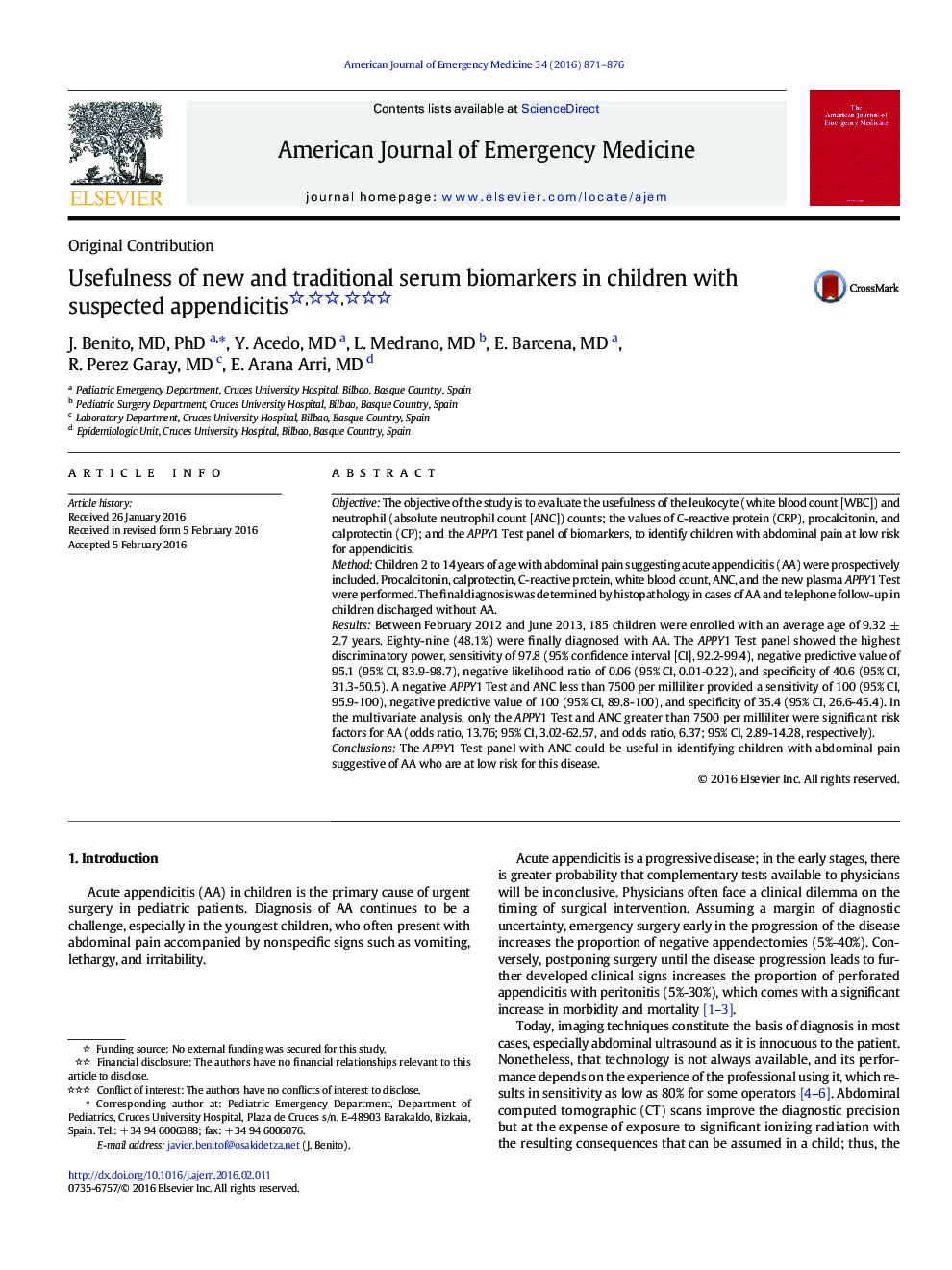| Article ID | Journal | Published Year | Pages | File Type |
|---|---|---|---|---|
| 3223304 | The American Journal of Emergency Medicine | 2016 | 6 Pages |
ObjectiveThe objective of the study is to evaluate the usefulness of the leukocyte (white blood count [WBC]) and neutrophil (absolute neutrophil count [ANC]) counts; the values of C-reactive protein (CRP), procalcitonin, and calprotectin (CP); and the APPY1 Test panel of biomarkers, to identify children with abdominal pain at low risk for appendicitis.MethodChildren 2 to 14 years of age with abdominal pain suggesting acute appendicitis (AA) were prospectively included. Procalcitonin, calprotectin, C-reactive protein, white blood count, ANC, and the new plasma APPY1 Test were performed. The final diagnosis was determined by histopathology in cases of AA and telephone follow-up in children discharged without AA.ResultsBetween February 2012 and June 2013, 185 children were enrolled with an average age of 9.32 ± 2.7 years. Eighty-nine (48.1%) were finally diagnosed with AA. The APPY1 Test panel showed the highest discriminatory power, sensitivity of 97.8 (95% confidence interval [CI], 92.2-99.4), negative predictive value of 95.1 (95% CI, 83.9-98.7), negative likelihood ratio of 0.06 (95% CI, 0.01-0.22), and specificity of 40.6 (95% CI, 31.3-50.5). A negative APPY1 Test and ANC less than 7500 per milliliter provided a sensitivity of 100 (95% CI, 95.9-100), negative predictive value of 100 (95% CI, 89.8-100), and specificity of 35.4 (95% CI, 26.6-45.4). In the multivariate analysis, only the APPY1 Test and ANC greater than 7500 per milliliter were significant risk factors for AA (odds ratio, 13.76; 95% CI, 3.02-62.57, and odds ratio, 6.37; 95% CI, 2.89-14.28, respectively).ConclusionsThe APPY1 Test panel with ANC could be useful in identifying children with abdominal pain suggestive of AA who are at low risk for this disease.
